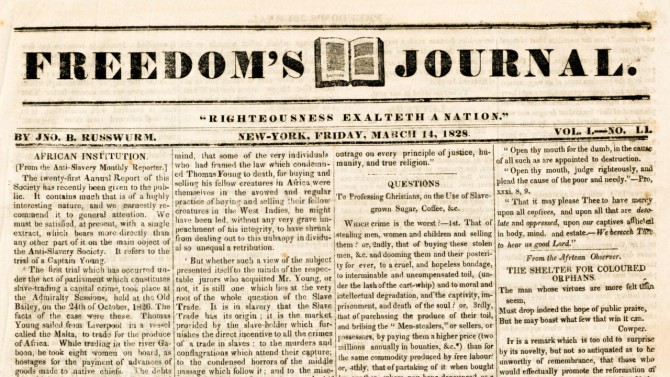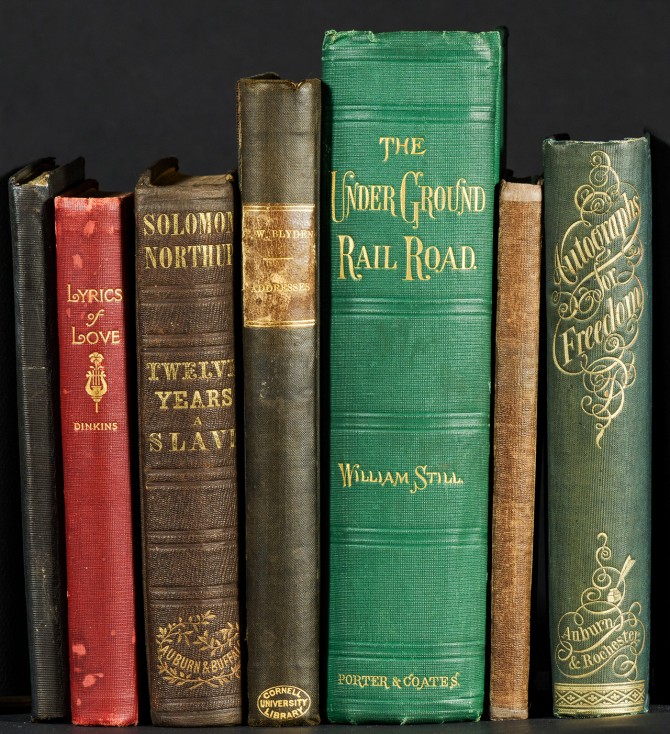Black print history, community featured in exhibit
By Jose Beduya
A new library exhibit will highlight the close-knit, vibrant communities that Black writers in the U.S. created through newspapers, books, pamphlets and other publications in the 18th to 20th centuries.
The exhibit, “Black Print: African American Writing, 1773-1910,” will open Sept. 19 at Hirshland Exhibition Gallery of Cornell University Library’s Carl A. Kroch Library.
“The full title includes the quote ‘Our Warfare Lies in the Field of Thought,’ which comes from the 1847 National Convention of the Colored People and Their Friends held in Troy, New York,” said exhibit curator Derrick R. Spires, who will lead a tour from 4:30 to 5:30 p.m. on opening night, followed by a reception until 7. “It was part of a call to create a Black press and to emphasize the importance of print as a cultural and political tool.”
The exhibit is meant to “rethink Africana Rare and Manuscript Collections at Cornell to go beyond the framing around slavery and anti-slavery, which tends to focus more on white activists, white agency, and less on Black agency,” Spires said. Currently on leave from Cornell’s College of Arts and Sciences, Spires is an associate professor of English and Cochran Scholar of Inclusive Excellence at the University of Delaware, specializing in Black print culture, citizenship studies and African American intellectual history.
Pieces from Cornell University Library’s Rare and Manuscript Collections (RMC) are showcased in “Black Print,” including issues of the Colored American, the Pine and Palm and the North Star newspapers; pamphlets and other ephemera related to Black political gatherings across cities and states known as “Colored Conventions”; and early editions of works by Black writers including the poets Frances E.W. Harper, Paul Lawrence Dunbar and Phillis Wheatley, the first African-descended person to publish a book of poetry in British North America, in 1773.
Several display cases also highlight works by influential activist, thinker, writer and orator Frederick Douglass, including his political treatises, public speeches and several early editions of his autobiographies.
The exhibit reveals how newspapers served as a powerful vehicle for literature, culture and community-building, publishing a range of materials, from novels in serial form to daily public announcements.
“I want people to come away with a more nuanced, holistic sense of the things that Black folks were using print to do – from organizing churches and mutual-aid societies to giving out notices of weddings and anything else one would use a newspaper to do,” Spires said.
“Black Print” runs through July 31, 2025, and is supported by the Stephen E. and Evalyn Edwards Milman Fund for Exhibitions. Curatorial support was provided by Kofi Acree, director of the John Henrik Clarke Africana Library and curator of Africana Collections; Katherine Reagan, the Ernest L. Stern ’56 Curator of Rare Books and Manuscripts; and Kate Carlin, exhibitions coordinator.
Jose Beduya is a writer and editor for Cornell University Library.
Media Contact
Get Cornell news delivered right to your inbox.
Subscribe


